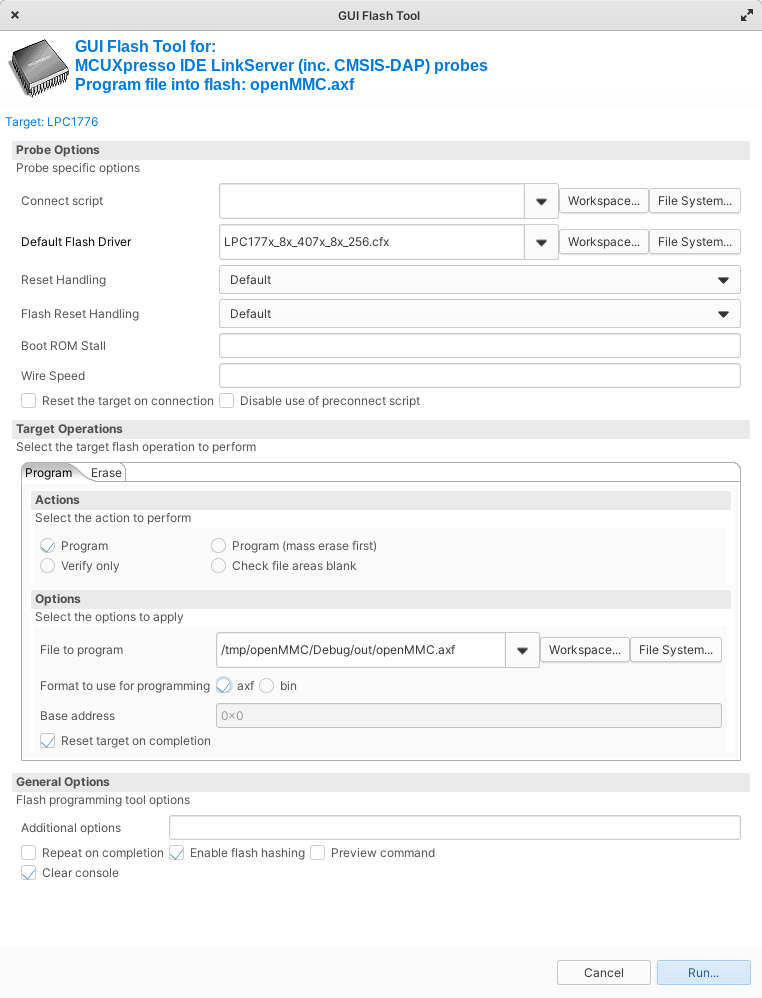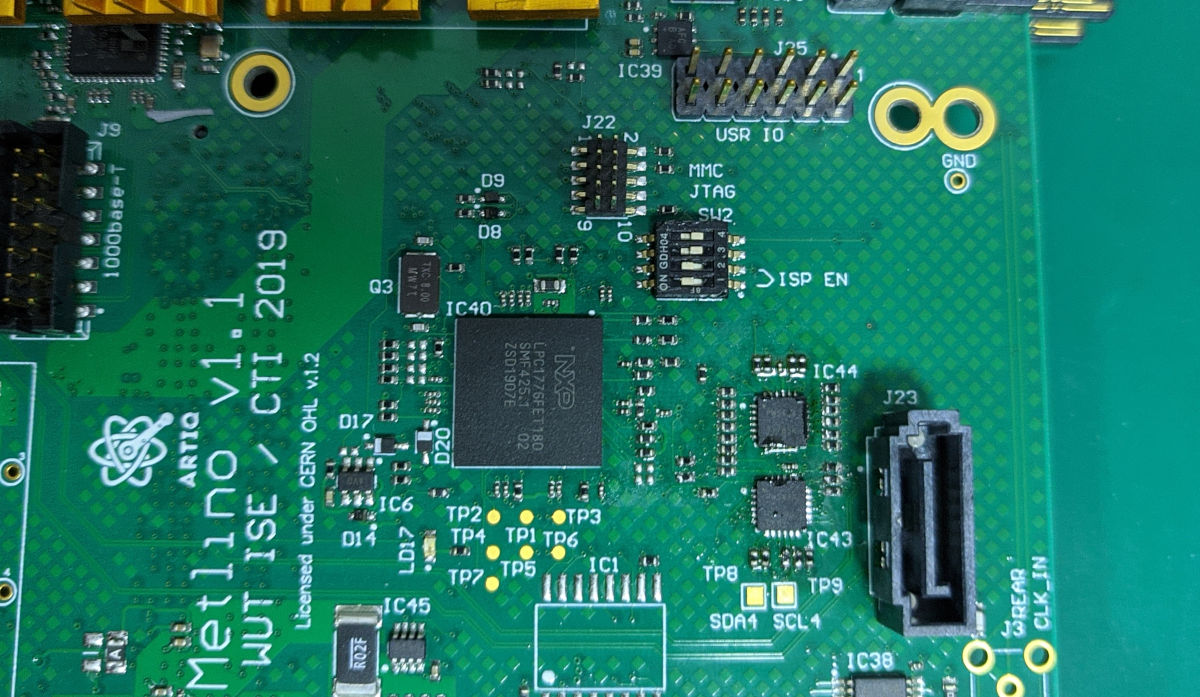Managment CPU
Managment CPU configures and manages various aspects of Metlino to operate correctly in MicroTCA crate. Its main tasks are:
communication with the MCH,
negotiating payload power,
enabling various on-board power supplies,
monitoring stability of on-board power supplies,
managing hotswap abilities,
supplying sensor information via IPMB.
Managment CPU boot
During boot Managment CPU performs several tasks:
configures CPU, UART from own FLASH
sets IO port directions
configures I2C switch base address for master ports - MMC, FPGA
communicates with MCH and asks for payload power if hotswap handle is inserted
enables power supplies in sequence described in power supply section
Note
Configuration of CPU, UART does not affect any of LED indicators.
Compiling firmware
Source code of OpenMMC is located here.
Cmake
Compiling under Linux using cmake toolchain is the preferred option. Clone or download git repository. Then:
mkdir build && cd build
cmake ../ -DBOARD=metlino -DTARGET_CONTROLLER=LPC1776 -DCMAKE_BUILD_TYPE=Debug
make
Minimal Dockerfile which downloads and compiles firmware:
FROM ubuntu:20.04
RUN DEBIAN_FRONTEND=noninteractive apt-get update && \
DEBIAN_FRONTEND=noninteractive apt-get upgrade -y && \
DEBIAN_FRONTEND=noninteractive apt-get install -y gcc-arm-none-eabi cmake git
RUN git clone https://github.com/sinara-hw/openMMC.git && \
cd openMMC && git checkout sayma-devel
ENV CC="arm-none-eabi-gcc"
ENV CXX="arm-none-eabi-g++"
RUN cd openMMC && mkdir build && cd build && \
cmake ../ -DBOARD=metlino -DTARGET_CONTROLLER=LPC1776 -DCMAKE_BUILD_TYPE=Debug \
-DCMAKE_C_COMPILER_WORKS=1 -DCMAKE_CXX_COMPILER_WORKS=1 && \
make
ENTRYPOINT ["/bin/bash"]
You can use it as a reference to configure your system for compilation.
MCUXpresso
Follow steps in MCUXpresso and substitute source repository.
Flashing firmware
Header flashing
The CPU can be upgraded by USB cable and NXP programmer (can be used other programmer but make sure that header shorts pins 3, 5, 9) using LPCXpresso/MCUXpresso, Flashmagic or any other software which can talk with NXP bootloader. The tested programmer is LPCLink V2. Flashing using programmer also allows to debug the CPU. Use openMMC.axf file for flashing with LPCXpresso/MCUXpresso.
Disable power on Metlino
Disconnect programmer from USB
Connect ribbon cable

Connection of programmer to the board
Enable power on Metlino
Connect programmer to USB
Flash
Select LPC_LINK2
Default flash driver = LPC177x_8x_407x_8x_256.cfx (select from file system), reset handling default, flash reset handling default

Run
Disconnect programmer from USB
Disable power on Metlino
Disconnect ribbon
USB flashing
SW2 switch can be used to enable ISP mode of managment processor. Enabling first and second switch allows to program the processor using USB. Enabling last switch allows to run the board outside of the crate. See Board overview for the location of the header (top view, call-out 16).
Run command arm-none-eabi-objcopy -I binary -O ihex /path/to/openMMC.bin /path/to/openMMC.hex
The CPU can be upgraded using USB and flashmagic software. This option only allows to flash IC, without any debug option.
Steps to flash using USB:
Set SW2 first and second switches to “ON” position on Metlino

Switch positions for USB programming
Set LPC1776
Select last serial port that appears after connecting Metlino via USB
Select baud 57600
Select enitre device for erase
Select hex file you generated earlier
Enable verify after programming
Press start
Flashmagic settings
Set SW2 switches to their original positions after flashing is done

Switch positions for normal operation
On linux tools such as mxli can be used to program Managment CPU.